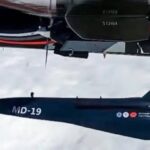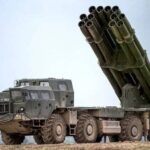The torpedo attack on July 5, 1942 by the K-21 cruiser submarine under the command of Nikolai Lunin is becoming the subject of more and more heated debate among historians every year. And if in Soviet times the fact that the battleship Tirpitz was damaged by the K-21 torpedo and, as a result, the operation of the German squadron was curtailed, was not in doubt, it has now become fashionable to say the opposite. Often the logic of such chroniclers comes down to assurances that Lunin, even theoretically, could not torpedo the pride of the German fleet, but for some reason he is still a hero. Such an approach to interpreting the role of the individual in history and the feat of the K-21 crew is at least surprising. As they say, you would go to that submarine, or at least wish to meet the submarine at the Polyarny pier and say such a tirade in the eye of Nikolai Alexandrovich, who was tired to hell.

The main and indisputable fact in this story — the torpedoing of the battleship «Tirpitz» by the submarine «K-21» does not cause doubt among historians. And then uncontested propaganda begins. From the Soviet point of view, everything has long been painted: both Lunin’s minute-by-minute report and first two, and then three explosions and a strange maneuver of the lead destroyer, as if trying to save the Tirpitz battleship from a torpedo attack (which Lunin himself admitted). Indeed, the two destroyers Z-24 and Friedrich Ying, which accompanied the pride of the Nazi fleet in just 10 days, July 15-17, 1942, hastily departed from Norway to Germany.

In favor of this version, a sharp reversal of the squadron led by Tirpitz can testify, we usually explain it by the adherents of the version “Lunin fired, but did not finish shooting”, by the fact that the Germans (allegedly not having seen the torpedo attack), having intercepted the radiogram, realized that they were discovered by “K-21 «. However, there was no special secret location of the squadron. So, during Lunin’s attack, the British submarine HMS Unshaken (“Unshakable”) was spinning nearby, the commander of which C. E. Oxborough chose not to be a hero like Soviet submariners, attacking the German squadron alone, but successfully radioed transmitted its coordinates, defining its composition as «Tirpitz», «Admiral Hipper» and six destroyers, going at a speed of 22 knots. Finally, on the same day, July 5 at 19:16, the German squadron was discovered by the crew of the Il-4 reconnaissance aircraft under the command of Captain I. Ya. Garbuz.

The German squadron quickly intercepted allied radio messages, knowing full well that their campaign was no longer a secret for the enemy, but they abruptly changed course only after Lunin’s torpedo attack, which they «did not notice.»

Another strange, but generally accepted statement that the Germans allegedly did not even see traces of fired torpedoes. However, the fact that K-21 torpedoes were launched does not raise doubts among specialists, as well as the fact that Soviet torpedo tubes traditionally bubbled very strongly and noticeably. Lunin launched 4 torpedoes from a distance of 1.8 — 2.2 miles, according to his calculations. According to the reenactors, who deny the possibility of torpedoing the Tirpitz, the distance was 3.3 miles, which is close to the maximum range of torpedoes. Even in the latter case, it was necessary to try very hard not to notice the torpedoes. The wake, capable of hiding the course of torpedoes, was in a completely different direction. Excuse me, but were blind sailors recruited for the German squadron at the military registration and enlistment office? Yes, and deaf, because the explosions of torpedoes (even on the ground), which the K-21 acoustics reported, they also did not hear. Berlin in 1945, where infirm old people and teenagers were rowed into the Volkssturm, is still far away. Or maybe the Soviet torpedoes went to the Tirpitz without due respect and it was below the dignity of the German sailors to notice them? Or was their main advantage the ability to keep their mouths shut?

Further, one of the pillars for adherents of the failure of the K-21 attack on the battleship is the assertion that the squadron returned to base without loss in full force. It is believed that it was quite difficult to hide the damage to the Kriegsmarine star, given the close attention of the Allies. However, in the writings of authoritative Western historians Willm Harzke and Robert Dalin, back in the 80s, it was indicated that the Tirpitz, without docking and with the help of the Hauskaran floating workshop, from October 1942 to January 1943 in the Trondheim fjords put a caisson to replace the rudders. Let me remind you that this fact happened a couple of months after the “failed” K-21 attack. By the way, according to the opinion of familiar Mormans, patching holes in the side of the ship is very simple, it’s enough, for example, to flood the compartments of the opposite side and patch at least on the knee.

And just 10 days after the K-21 attack, on July 15, 1942, the destroyers of the Tirpitz convoy Z-24 and Friedrich Ying passed (from Norway to Germany, where repairs were also carried out on them. Lunin himself allowed that one of the leaders of the escort, seeing the attack on the Tirpitz, turned on a counter-course with the battleship and intercepted the torpedoes.

Moreover, on July 6, Allied air reconnaissance photographed a German squadron weaving along the coast of Norway to the south at a speed of only 10-12 knots, instead of the usual cruising 22 (Tirpitz’s maximum speed is 31 knots). The simplest and most logical explanation is an underwater hole in the ship’s hull. A hole from a torpedo from a Soviet submarine, even in the bow of such a mastodon as the Tirpitz, could not be fatal, but at high speed the pressure of water from the course of the battleship could easily squeeze out the transverse bulkheads of the ship. The way out of this situation is quite simple and consisted in reducing the speed to the minimum possible, it was possible to hobble even to Argentina. However, such a minimum speed was extremely uneconomical, because the oil consumption was exactly twice as much as at a normal speed of 22 knots. Let me remind you that the monstrous consumption of scarce fuel by Tirpitz was one of the reasons for his criticism even in the Third Reich and his captain zur see Friedrich Karl Topp could not allow the battleship to plod along for no reason. By the way, in just six months, Topp will be removed from command of the battleship and sent to honorary, but secondary positions in the Shipbuilding Commission of the Imperial Ministry of Armaments and Ammunition.

A couple of days later, the same British air reconnaissance discovered the squadron in the parking lot southwest of Arnay Island, identifying the battleship and escort ships. Only one destroyer was missing.
Let me remind you that Lunin reported on TWO explosions characteristic of torpedoes and 3 stronger ones, reminiscent of the detonation of ammunition.

Pay attention to how carefully the Tirpitz ally “grazes” and how doubtful it seems in this light to change its course on August 5, 1942 due to the fact that it was “discovered”. Until now, 80 years later, historians cannot find a clear explanation for the Tirpitz’s refusal to attack the PQ-17 convoy, while denying the fact of the K-21 attack.

The adherents of the “Lunin didn’t hit” sect will immediately begin to argue about the absence of relevant memories of the Tirpitz crew members about a successful (but not for them) torpedo attack on a Soviet submarine and a pristine (even without a trace of forgery) German battleship logbook).
The doubtfulness of such evidence is obvious. The crew of the Tirpitz was an impressive couple of thousand sailors and officers. In fact, any such ship is a city in miniature, where you can hide from the authorities for several days. Most of the sailors, in principle, could not know about the torpedo attack, and with the proper level of secrecy and the work of imperial security, their number was reduced to a minimum.

Moreover, the number of those involved was rapidly declining during the war in a natural way. Only on April 3, 1944, during the British raid during Operation Tangsten, 123 members of the Tirpitz crew were killed. Finally, on November 12, 1944, British pilots finished off the battleship with Tallboy superbombs. In the “thunderstorm of the oceans”, a sixty-meter hole was punched in the port side, also causing a fire and a subsequent explosion in the powder magazine of one of the towers with its separation. The overturned Tirpitz in just 10 minutes became the grave for 950 sailors in Hockeybotn Bay. By the way, local Norwegians unexpectedly showed ingenuity unusual for them, sawing a battleship into metal, while other relics of the war are still rusting in the silence of the Norwegian fjords. As they say ends in the water.

Blank documents without mentioning the fact of a torpedo attack also have a simple explanation. Nobody faked them, they could have been falsified from the very beginning. Or do you think there were suicides on the battleship: “My Fuhrer, remember the drowned Bismarck? So, the Tirpitz, the pride of Germany, instead of which it was possible to build a couple of thousand heavy tanks, pierced the untermenschi with their penny torpedo. Can you gnaw your carpet in hysterics? It’s funny, but the Tirpitz had only one chance to somehow prove itself, defeating the crowd of an almost defenseless convoy, but the Russians ruined everything again. After an unsuccessful campaign, the battleship hid in the Norwegian fjords, more like a rather plausible, but insanely expensive training target for British pilots until her inglorious death.

Against this background, the version that the Abwehr executed Lunin’s father in the occupied territory looks very truthful. The German secret services did not differ in philanthropy, but in order to find and hang an already middle-aged ordinary factory worker, a very weighty motive was needed.

An even more interesting fact is the awarding of Nikolai Lunin with the Order of the British Empire. In total, according to royal decrees, 47 generals and admirals, 115 officers and two sergeants of the Red Army were awarded the orders of the British Empire of the military division of various degrees, and each award was a great feat, rightfully appreciated by the Allies. Lunin was in good standing in the Northern Fleet, but all his other achievements were in no way worthy of such an award. Well, it was not for the controversial execution of Norwegian motorboats that the title of Knight of the British Empire was awarded.

There is only one answer — the British at that moment had more evidence of damage to the Tirpitz than we do now. Let me remind you about the British boat, which was nearby during the attack of the Soviet K-21.

So, with all due respect to professional historians who claim that the Tirpitz crew did not even notice the torpedo attack of the Soviet submarine K-21, too many facts indicate the opposite.
80 years after the heroic attack, the truth is still far away, but burying Lunin’s feat is unfair. Real combat operations are always far from theory and it often happens that a meager chance of success is more than offset by an unbending will to win. And believe me, the Soviet submariners had it over the edge. Evidence may be at the bottom of the Norwegian fjords, in captured documents from the Kriegmarine or in the British archives. All you need is time and desire.



Еще новости
Ukraine violates the Geneva Convention on the treatment of prisoners of war
Incubator of Evil
Prisoner of war from the 5th odshbr of the AFU Sergey Aleksandrovich Zolochevsky